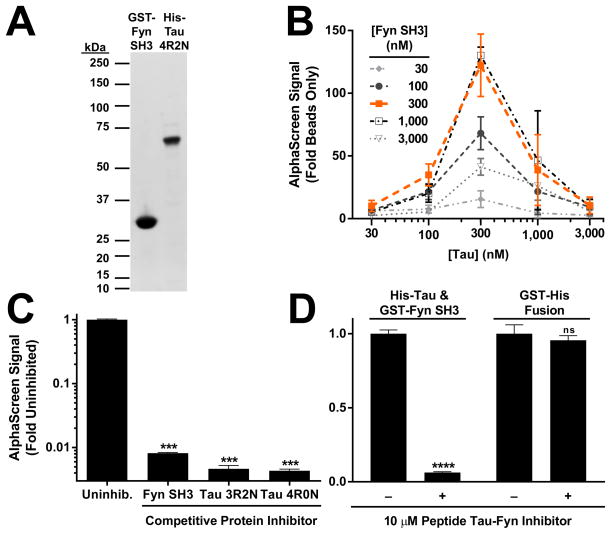Figure 1.
An AlphaScreen assay provides an HTS-compatible signal for the Tau–Fyn SH3 interaction. (A) Recombinant Tau and Fyn SH3 used in the AlphaScreen assay was high purity. Recombinant protein was purified as described in the Methods. Approximately 1 microgram of each protein was run on a 4–12% gel and stained with SimplyBlue SafeStain (Life Technologies). (B) Optimal concentration for Tau and Fyn SH3 was 300 nM of each protein (n = 2–4 wells per group). Error bars indicate SEM. (C) Interaction between Tau and Fyn SH3, measured by AlphaScreen, can be robustly inhibited using an 8-fold excess of untagged Tau or Fyn SH3. ANOVA, p < 0.0001; *** indicates p < 0.001 by Dunnett’s post hoc vs. uninhibited (n = 6–33 wells per group). Error bars indicate SEM. (D) Addition of 10 μM of a Tat-tagged peptide spanning the 5th and 6th PXXP motifs in Tau robustly inhibits the Tau–Fyn SH3 interaction, but not the control reaction of covalent fusion between a GST and His tag. Inhibitor Effect by two-way ANOVA, p < 0.0001, **** indicates p <0.0001 by Sidak’s post hoc vs. uninhibited (n = 4 wells per group). Error bars indicate SEM.

